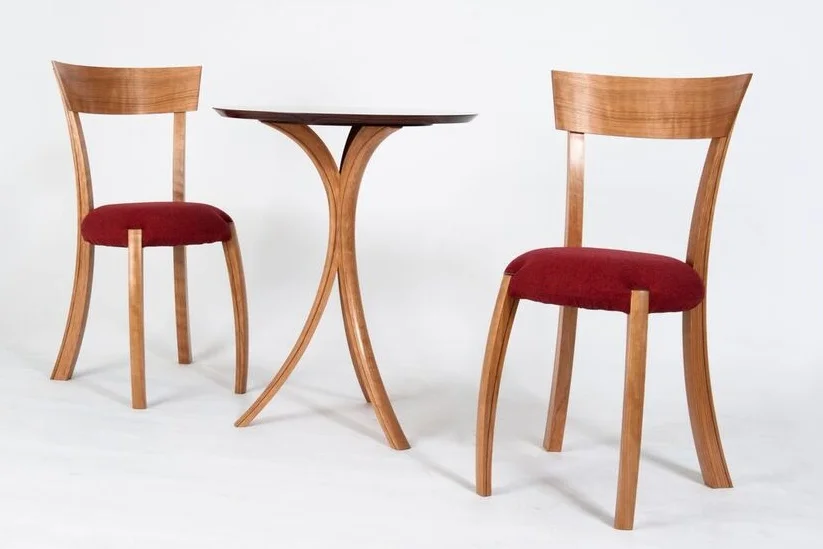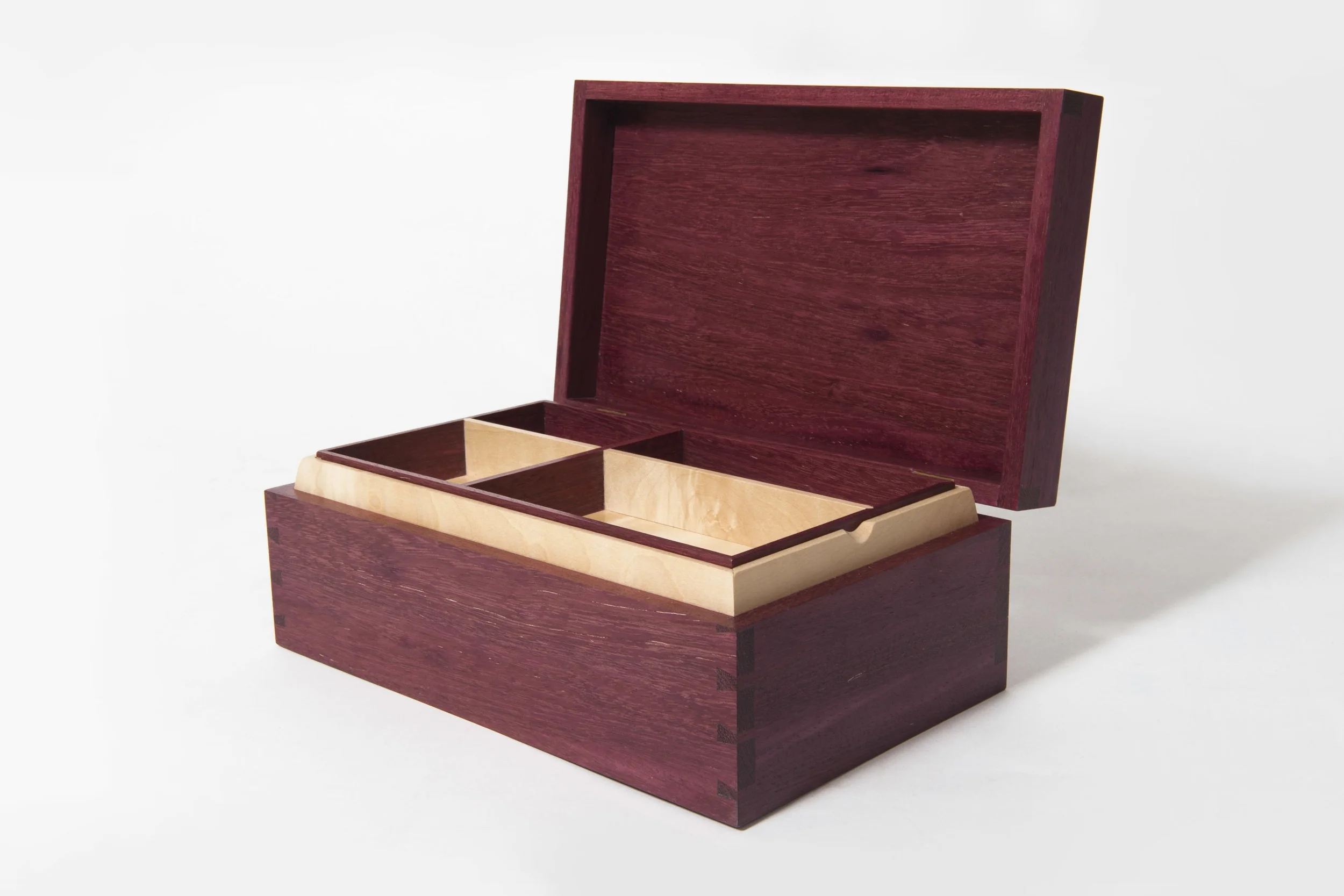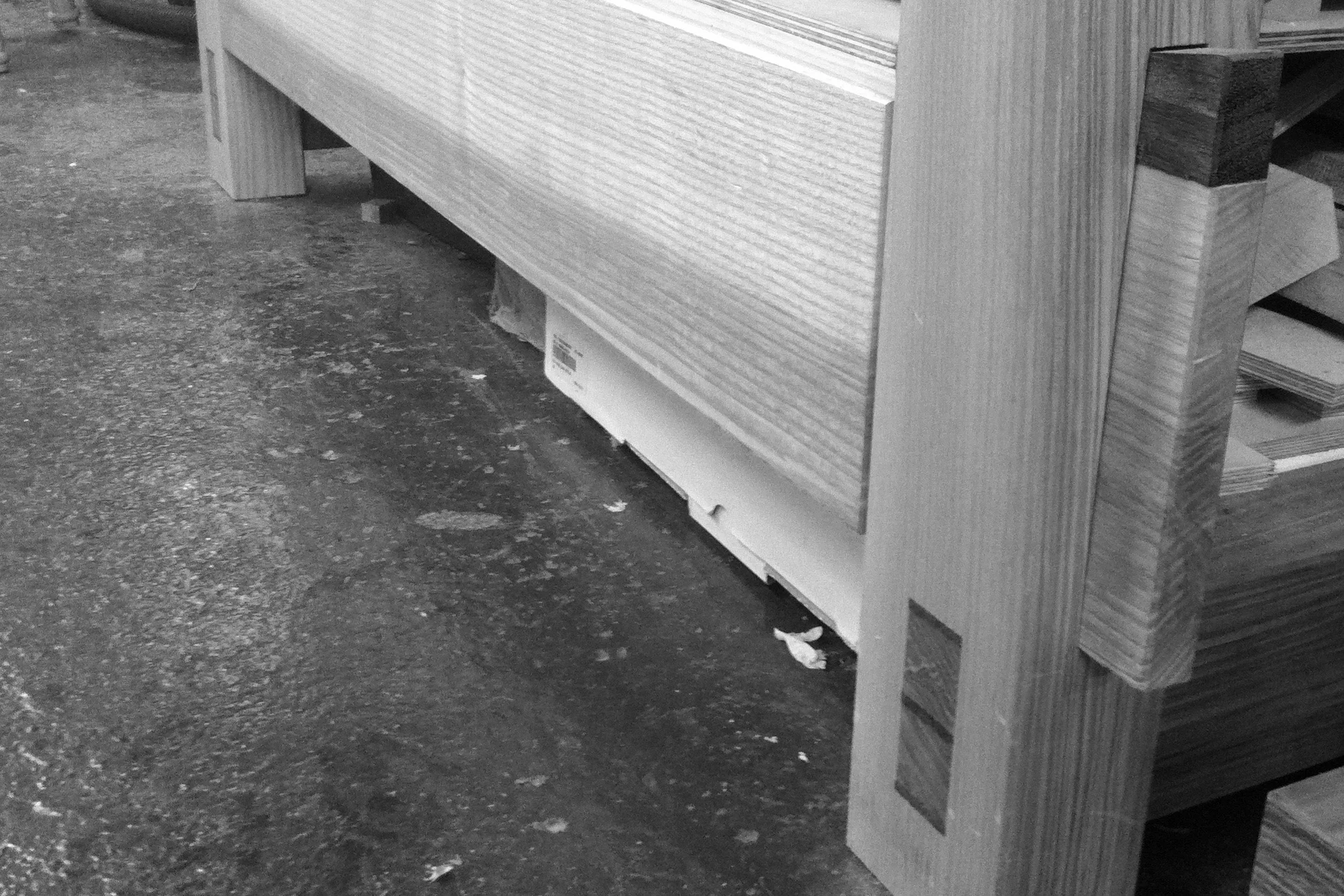Apprentice Notebook
Apprentice Notebook
The Apprentice Notebook was a blog that I kept during my training year at Rowden, mainly for family and friends who wanted to follow me on my journey. Reflections, mistakes, romanticisation of the craft - it’s all in here!
While it won’t tell you how to make furniture, it might be of value to anyone who wants to learn the art of cabinetmaking. Each post has a simple tag - in blue at the bottom of the description. If you wish to read it in date order, scroll down to ‘So much planing…” and work backwards from there. Feel free to leave me some feedback. Let me know what you think of the articles, or if there is anything else you would be useful in this section.
A useful tool to use in design is a question to explore throughout the work. A question provides a focus beyond the specifics of a piece, and can sort of reach in and pull it further along than you might take it alone.
Veneering has gotten a bad rap throughout history, frequently being seen as a cheap substitute for 'real wood'. In the hands of a cabinetmaker, veneer is used in a much more considered way than just making a product ‘on the cheap’.
What is it about wood that captivates us? Modern materials abound, yet so often we return to wood when seeking a 'certain something' in our furniture. Certainly the life found in a board of timber draws in many - the grain, the colours, that close feel to the natural world.
There is both an artistic and a technical side to what we do here at Rowden. Our drawings from the natural world form the essential 'vocabulary' that influences our designs, and we are encouraged to draw frequently. However, when it comes to actually making a piece, we switch firmly into technical gear.
There is something very special, in my mind at least, in my first big project being the bench upon which I will make everything else. A cabinetmaker's bench is his largest and arguably most important tool. More than just a tabletop with a vice attached, the bench is the first bespoke piece of furniture that we make here at Rowden.
Fundamental to life is breathing: without breath there is no life. The most basic meditation technique is to focus merely on your own breath. Breathe in...breathe out, remembering that you are alive in this moment.
The mortice-and-tenon is one of the mainstays of joinery, and glues up smart and very secure. Two variants on this join finished our hand-tools projects.
Modern joining methods have largely removed the dovetail from our everyday furniture, and this is not without reason. The labour and skill required to produce dovetails far outweighs the benefit it offers over modern methods in terms of functionality. They do, however, offer something else.
David has been speaking in the Dimblebies (Rowden morning lectures) this week on his life as a furniture maker, and one of the phrases he mentioned was "the extra 5% that kills you". The premise is this: we can go to 95% fairly easily, and produce a good, well-finished piece of work. But it is that additional 5% that takes the piece to exceptional; it is this additional 5% that kills you.
When you tell people you are learning to make furniture, they want to see something amazing, and pretty quickly. When I showed folks back home my first project, like looking at an ugly baby, it was hard for some to hide their disappointment.
Autumn is by far my favourite season, and as far back as late August, I felt its approach. I remember the day well. The skies were clear and the sun was shining, but the air had a sharpness to it, a certain bite that just catches the back of the neck.
As I was arriving, Dave was leaving. He had been at Rowden for a few months, working through the initial projects offered here. When I asked him how it was, he had a slightly withered look on his face, "Planing", he replied, "so much planing..."












